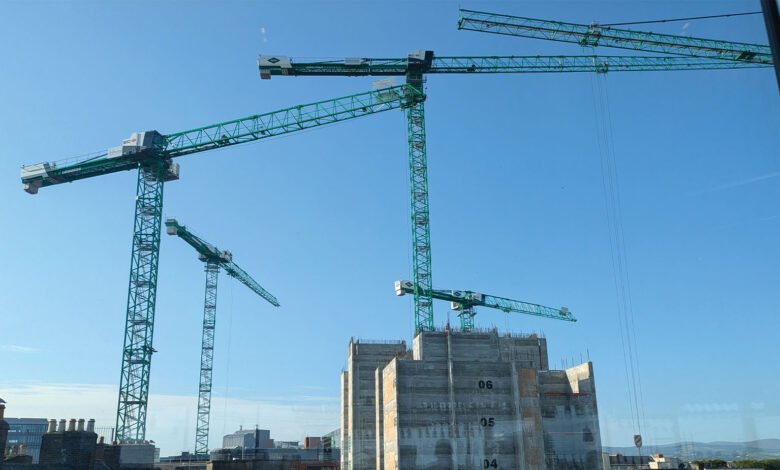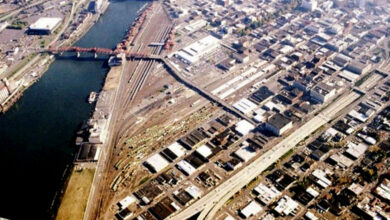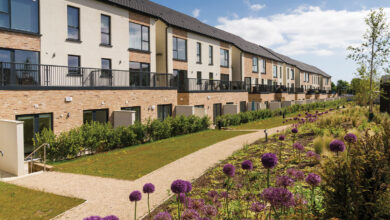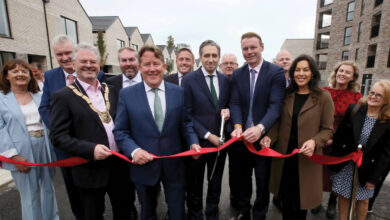ESRI: Between 35,000 and 53,000 housing units needed per year

Between 35,000 and 53,000 dwellings must be built per year until 2040 in order to meet projected housing demand, researchers from the Economic and Social Research Institute (ESRI) have asserted.
The research, published in July 2024, finds that structural housing demand is projected to be around 44,000 per year from 2023-2030, and around 40,000 per year over the 2030-2040 period.
As international migration is the key driver of population growth in Ireland, additional scenarios are explored that incorporate higher and lower international migration assumptions than in the baseline scenario.
Informed by data including Census 2022, international trends, and ESRI research evidence, the researchers assert that, in a baseline population scenario, estimated structural housing demand in the period 2023-2030 ranges from around 38,000 to 50,000 per year depending on assumptions around household size and obsolescence rates.
In a high migration scenario, the estimates range from around 41,000 to 53,000 per year, while in a low migration scenario, the estimates range from 35,000 to 47,000 per year.
The ESRI’s findings present significant challenges and opportunities for policymakers. The expected rise in housing demand, particularly in urban areas, calls for a proactive approach to ensure adequate supply. Key considerations include:
- Aligning housing supply with demographic trends: Rapid population growth and smaller household sizes will necessitate a diverse range of housing options, particularly in areas experiencing higher growth.
- Addressing obsolescence: With a significant portion of the housing stock ageing, policies must focus on maintaining and upgrading existing housing while ensuring enough new supply.
- Planning for regional disparities: Policymakers must account for the uneven geographic distribution of demand, ensuring that rural and urban areas receive appropriate levels of investment in housing infrastructure.
Population growth
Ireland has experienced one of the highest rates of population growth in the EU, with a 9 per cent increase from 2016 to 2022. This surge has been largely fuelled by net migration, which remains a volatile and significant driver of demographic changes.
“Around 44,000 new units a year are necessary to keep with population growth.” Adele Bergin, Associate Research Professor, ESRI
The report outlines three population scenarios – baseline, high, and low migration – to project future population growth. Under the baseline scenario, the State’s population is expected to increase by 922,000 people by 2040, reaching 6.1 million. However, projections are sensitive to migration trends, with population figures ranging from 5.9 million to 6.3 million depending on the range of migration projections.
At a regional level, the eastern and midlands region, especially the Dublin and mid-east areas, is expected to experience the highest population growth. Conversely, the northern and western regions are anticipated to see slower growth. This uneven distribution will place varying pressures on regional housing markets, with areas like Dublin requiring significantly more housing infrastructure.
Household formation: Headship rates and household size
Household formation, which is influenced by headship rates – the proportion of individuals heading a household, is cited by the researchers as a key metric in determining housing demand. Household size is inversely related to headship rates; a decline in household size leads to an increase in headship rates, thereby increasing the demand for housing units.
Between 1996 and 2022, the State recorded a modest rise in headship rates, but this trend has plateaued since 2016.
The report outlines two key scenarios for headship rates moving forward: a “current trends” scenario where household size remains stable at 2.6, and a “fall in household size” scenario, which would see average household size fall by 0.16 over the period.
The second scenario aligns with patterns observed in other European countries and would suggest a higher demand for housing if it materialises. The underlying drivers of household size include demographic factors like fertility and age structure, but housing supply constraints could also impact the pace of household formation.
Housing stock obsolescence and replacement needs
Another critical component in housing demand projections is the rate of housing stock obsolescence – the natural depreciation of existing housing stock. Obsolescence occurs as buildings age and require replacement to maintain a functional housing market. However, estimating obsolescence rates in Ireland is challenging due to limited data.
The ESRI report utilises several methods to estimate obsolescence, including examining the change in housing stock between censuses and incorporating the number of housing reconnections. It estimates obsolescence rates at between 0.25 per cent and 0.5 per cent annually, with higher rates in rural counties. This contributes to the overall need for new housing units, as dwellings lost to obsolescence must be replaced to meet ongoing demand.
Adele Bergin, an author of the report and an Associate Research Professor at the ESRI, says: “Housing demand, both now and in the future, has significant implications for housing policy in terms of the number of housing units required and the areas they are needed. Our research shows that on average, across a range of scenarios, around 44,000 new units a year are necessary to keep with population growth.”





